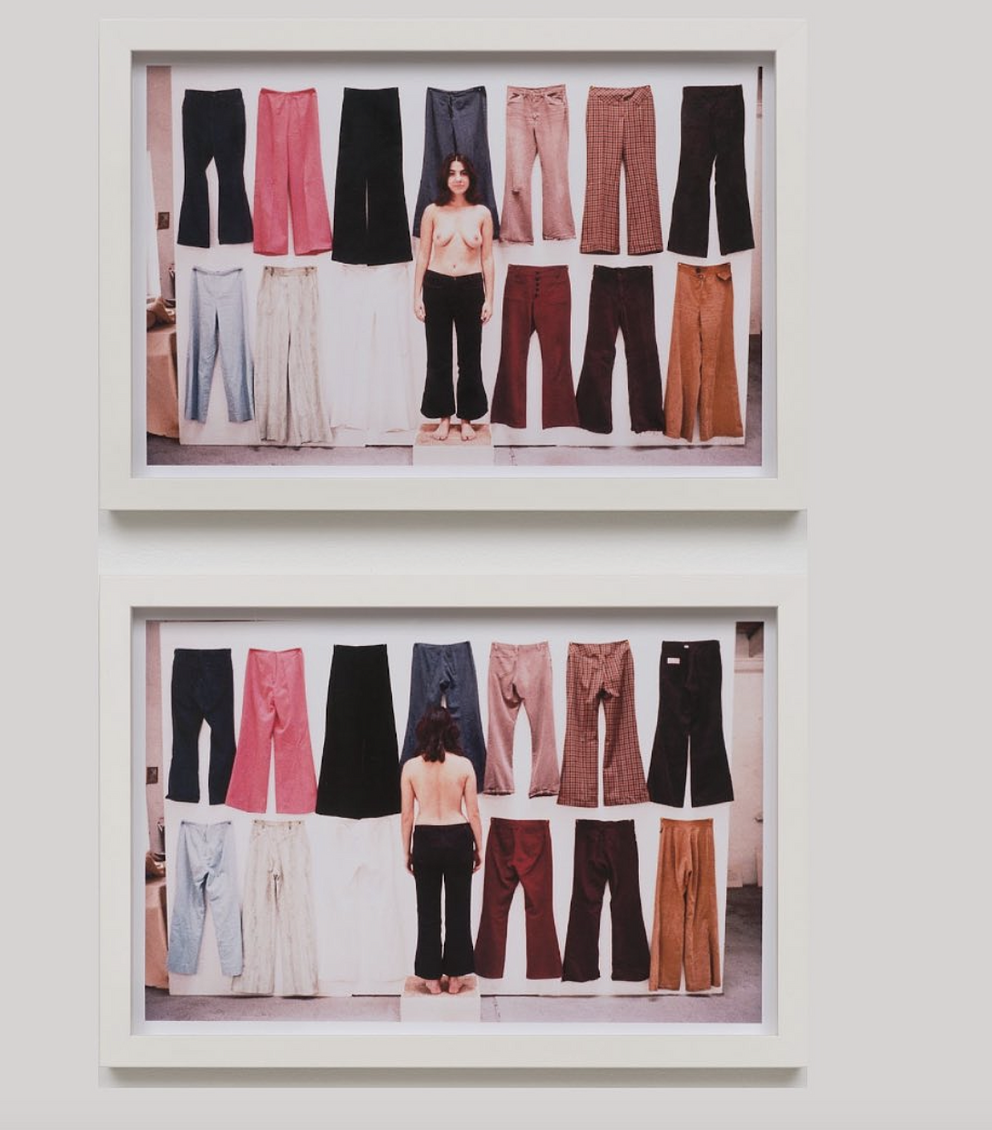MAPPING AN ART WORLD: LOS ANGELES IN THE 1970S-80S
Museum of Contemporary Art
Downtown Los Angeles
June 18, 2023 – March 10, 2024.
The work included in this exhibit (why must we insist on calling art “work”?) inspires the mindset that ignited its artists: curiosity, humor, joy, and experimentation. In All the Pants I Had Except the Ones I Was Wearing, Front and Back (1974/2010), Ilene Segalove photographed herself with, of course, all of her pants. In another image, a living paper doll thumbs her nose at capitalism. Segalove’s work explores the objectification of women and the unspoken rules of what constitutes art. Throughout the galleries, I found myself slowing down, a question hovering just out of reach: Have we forgotten how to play?
MOCA has had a rocky decade, but this new exhibition mines the museum’s roots and reminds us of the heart of LA’s contemporary art scene. Mapping an Art World: Los Angeles in the 1970s-80s is as well ordered as the era it presents was experimental; it informs without being overbearing, a feat as the museum historicizes itself, so kudos to MOCA curators Clara Kim and Rebecca Lowery. The exhibition is organized in sections named for places — CalArts, The Westside, The Brockman Gallery — with art created in and around the city just prior to the opening of the museum in 1979 and the building on Grand in 1986. Other sections are named after formative approaches — Bodies as Art, Ideas as Art — concepts now so thoroughly ingrained that seeing their radical innovation at the time is thrilling.
In Plank Piece I – II (1973/1989), Charles Ray suspended himself across a ladder leaning against a wall, a remarkable physical endeavor that radically shifts centuries of sculpture. In her self-portrait, Nancy Youdelman lay in a successive accretion of leaves, a female body dissolving, fusing, and dissipating, a visual poem both tragic and familiar (Leaves, A Self Portrait, 1973). The idea is the thing, and the thing is an idea in motion: full of ease but never easy.
Have artists, that subset of humans for whom play is essential, moved on from the wonderment and humor that we see in Ed Kienholz’s framed page, printed with the words “For A Baldessari Painting” (1969)? He was in lighthearted dialogue with his famous contemporary, widely known for a conceptual approach to painting. We might all be inspired by the daring merger of communal beauty with societal tragedy in Gregory Wiley Edwards’s From the Ashes of the Seven Headed Cobra, 1975, where a squiggly pink abstraction is formed from the literal ashes of a house burned down in a shootout between the LAPD and the Symbionese Liberation Army. This play has game, unafraid to explore the depths with quicksilver power, or to mirror back truths we didn’t even know we knew.
Claes Oldenburg’s rumpled oxford shirt on the back of a wooden chair, with detritus on the seat — pipe, wallet, keys, cuff links — recollects memories both specific and shared: my late father seems suddenly present while I am also aware of scattered items at the close of long days everywhere (Shirt with Objects on Chair, 1962).
I wonder if the desire to organize, theorize, or sell has outweighed that light as a raindrop/vital as water thing that inspires. But the spirit is infectious and I don’t dwell — I let the question float, a bright balloon.






